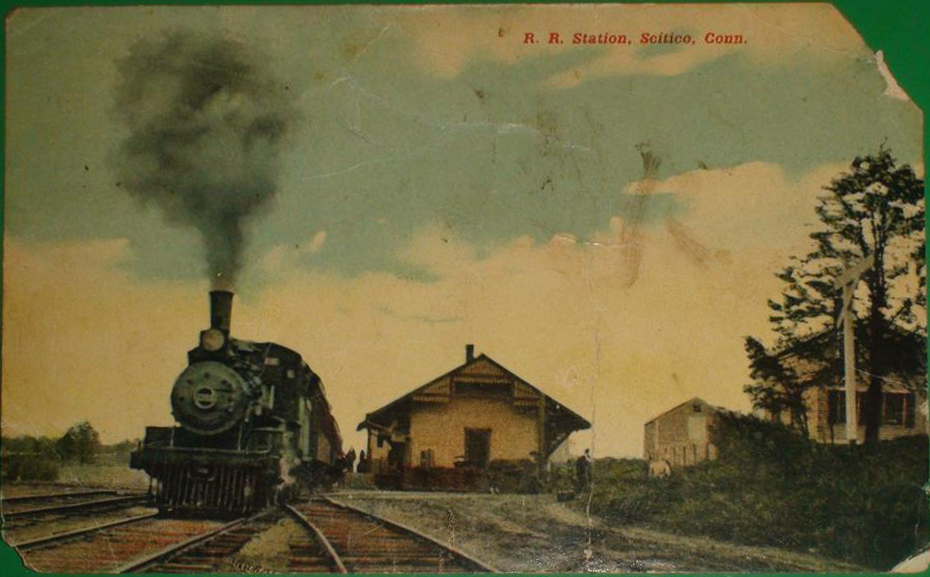In 1871, at nearly the apex of the railroad boom created out of competition, a group of investors sought to challenge the success of the Hartford and New Haven Railroad between the fledgling cities of Hartford, CT and Springfield, MA, by building their own railway on the opposite site of the Connecticut River between the two cities.
The group would call the line the "Connecticut Central Railroad", and would attempt to secure financing and construction for the road in spite of the challenges to the company's existence brought forth by the New York New Haven and Hartford Railroad. Nonetheless, the company was able to secure funding for the line, and begin construction in 1874, opening two years later in 1876. For the Massachusetts segment of the line, the company secured the earlier, still unbuilt, right of way of the Springfield & Longmeadow Railroad, which would be re-chartered as the Springfield and New London Railroad to meet the Connecticut Central at the state line.
 |
| A postcard of one of the stations along the route at Scitico, CT, under the flag of the New York New England & Hartford Railroad. Wikipedia Commons, 1910 |
After construction was completed, the line was initially leased to the New York and New England Railroad, but this arrangement would not last for long; the company would become the independent operator of its completed line by October of 1876, as well as the Westway Branch, which connected Melrose, CT to Rockville, CT. It wouldn't last long, as it would soon once again come under the umbrella of the NY&NE.
 |
| Excerpt of the Connecticut Central's Lease Status from the Report to the Stockholders of the New York & New England Railroad Company for the Year Ending Sept. 30, 1876.
|
|
 |
| The total mileage of the road as found in the Report to the Stockholders of the New York & New England Railroad Company for the Year Ending Sept. 30, 1876.
|
In an ironic twist, the line that was built to compete with the New Haven Railroad would, in less than two decades, come under its flag, as in 1895, the New Haven took control of the New York & New England Railroad. While ironic, this is hardly without precedent in the context of railroad mergers and acquisitions. It was very common for one or more lines serving similar territory to consolidate with one another, especially since in many cases, there was not sufficient traffic to justify having two separate railroad lines. Many of these lines were built in hopes of quashing a rival's railroad, and this is partly to blame for the incredibly large number of
railroad abandonments, especially in the Northeastern and Midwestern United States.
 |
1890 USGS Topo Map of the Connecticut Central, by this point known as the Springfield Division of the New York & New England Railroad. Note the NYNH&H Railroad on the west side of the Connecticut River.
|
I made a map of the operations of the line, and how they exist today, as you can see below:
The Westway Branch would be the first part of the line abandoned, doing so in 1937. The rest of the line would be inherited, along with the rest of the New York, New Haven & Hartford by Penn Central in 1968, and its successor, Conrail, eight years later. It has been slowly abandoned in a piecemeal state since, although much of the railroad in Connecticut remains in service without any customers, so movements along the route are quite few and far between.
The line had numerous ties to the Shakers in the Connecticut area, as could be implied by the fact that one of the stations along the route was named "
Shaker", and in fact, the line was brought to my attention by a historian of the Shaker in the area, Darryl Thompson, who discuss the Shaker roots of the Connecticut Central Railroad, and its ties to the timber industry in the late 19th century in this article from the
University of Connecticut, I suggest reading his blog to have a further view of the line! Thanks as always for reading, and thanks to Darryl for providing information on this line!







Comments
Post a Comment